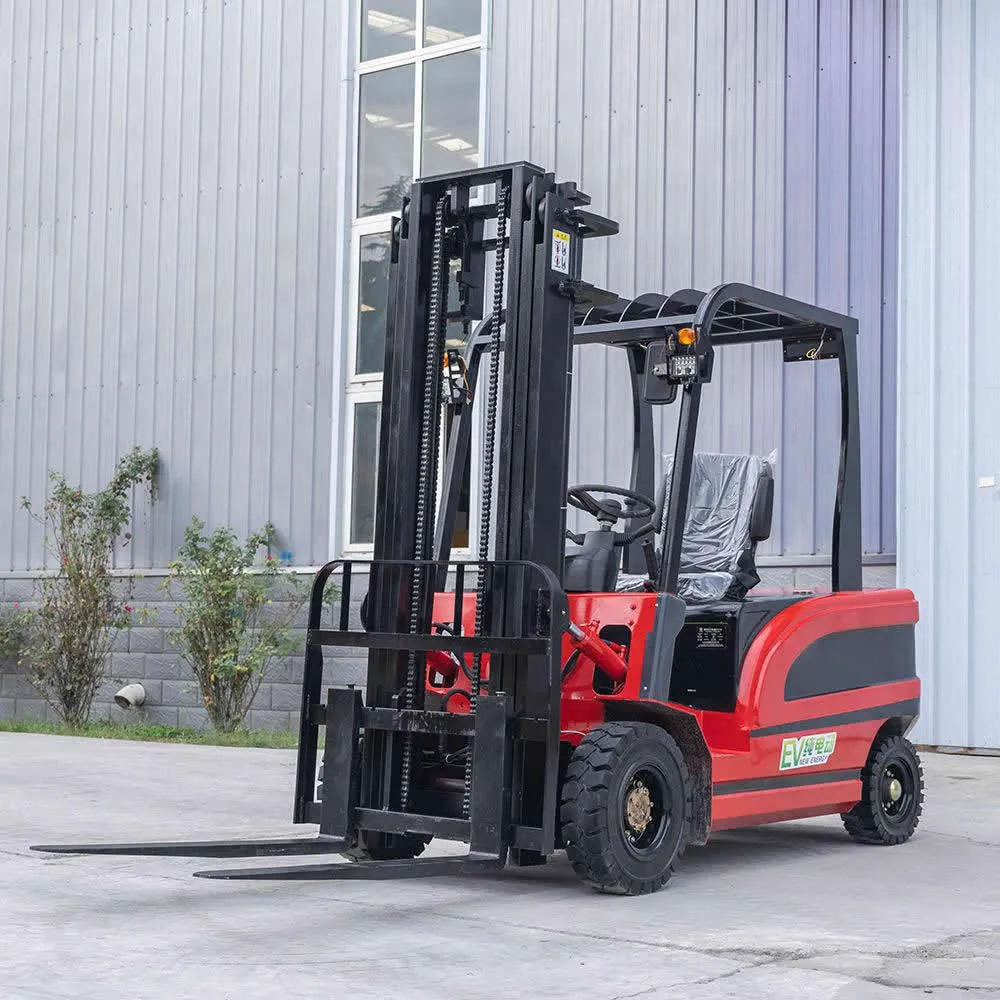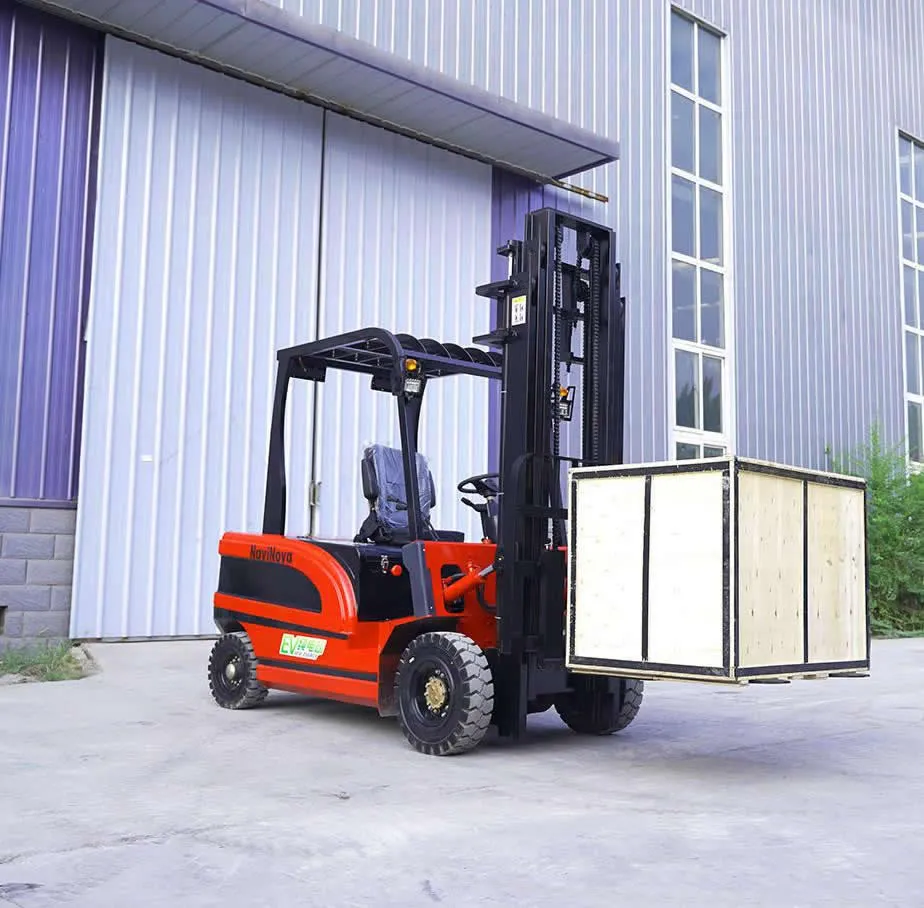Terrain forklifts, designed specifically for complex terrain, utilize advanced technology and operating strategies to ensure stability on uneven surfaces. They are widely used in construction sites, mining areas, forestry operations, and other unpaved ground environments. Their core advantages lie in their powerful power system and four-wheel drive structure. Equipped with a high-powered engine and fully hydraulic transmission, they maintain traction on steep slopes (e.g., 25°~30° climbing ability) and soft ground, preventing slippage or getting stuck. The tires feature deep treads and a wide design to enhance grip and anti-slip properties. For example, in mud or sand, a differential lock enables torque self-locking to prevent single-wheel slippage.
Compared to ordinary forklifts, terrain-fed forklifts face greater challenges, especially when driving and operating on uneven terrain. This article will analyze how terrain-fed forklifts operate stably from a technical perspective and discuss operating techniques for them in complex environments with uneven terrain.

1.1 All-Wheel Drive and Differential Locks
Terrain forklifts are typically equipped with an all-wheel drive system, enabling stable operation on soft or muddy surfaces. Differential locks effectively prevent wheel slippage and provide better traction.
1.2 Widened Tires and Low-Pressure Tire Design
Terrain forklifts typically use widened tires and a low-pressure tire design. This reduces ground contact pressure, increases the contact area, and better distributes pressure on soft surfaces, preventing them from getting stuck in mud.
1.3 Adjustable Suspension System
To cope with uneven terrain, many terrain forklifts are equipped with an adjustable suspension system that can adjust the vehicle's height and stiffness according to ground conditions, ensuring stability.
2.1 Choosing the Right Route
When driving on complex terrain, choose flat, firm surfaces for operation. If the ground is soft, avoid sharp turns or acceleration to reduce vehicle instability. Maintain a constant speed and avoid sharp turns to prevent skidding. 2.2 Maintain Low Speed
Uneven terrain increases the forklift's tilt angle, and high speeds can easily lead to instability. Maintaining a low speed allows for better vehicle control and ensures stable forklift movement.
2.3 Adjust Load and Counterweight
On uneven terrain, load distribution is crucial. The height and position of the load should be adjusted according to the terrain and operational needs to prevent a shift in the center of gravity that could cause a rollover. Additionally, adding counterweights can increase forklift stability.

3.1 Operating Techniques: Slow Operation and Precise Control
On uneven terrain, forklift operators need to pay special attention to speed and direction. Smooth throttle control and precise steering wheel operation can prevent unnecessary and violent movements of the forklift.
3.2 Correct Use of Tilt Angle Adjustment
Many terrain forklifts are equipped with tilt angle adjustment systems. Operators should adjust the forklift's operating angle according to changes in the terrain to ensure balance when operating uphill, downhill, or sidehill.
When going uphill, load the goods forward; when going downhill, reverse. For slopes exceeding 10%, secure the goods. The front-wheel drive design optimizes weight distribution and prevents longitudinal tipping.
On soft ground (such as mud or sand), use a reverse-to-probe method to assess the ground's load-bearing capacity and prevent sinking. If necessary, the differential lock can force torque distribution to help extricate the forklift.
3.3 Utilize Front and Rear Wheel Drive Flexibly
On sloping ground, utilizing the driving force of the front and rear wheels helps the forklift traverse different slopes more effectively while reducing sideslip.
3.4 Regularly Check the Forklift's Stability System
The stability system of a terrain forklift (such as the suspension system and differential locks) requires regular maintenance and inspection to ensure optimal performance during operation.
The stable operation of a terrain forklift depends not only on the vehicle's design but also on the operator's professional skills. By selecting appropriate routes, controlling speed, distributing loads effectively, and mastering operational techniques, the stability and safety of the forklift on uneven terrain can be effectively ensured.
With continuous technological advancements, terrain-flying forklifts will become increasingly adaptable to various complex environments, providing more efficient solutions for industrial operations. Limiting speed on uneven terrain is crucial to prevent loss of control due to speeding; for example, use the horn to slow down at intersections. In short, combining professional skills with standardized operation is key to ensuring the efficient and safe operation of terrain-flying forklifts.